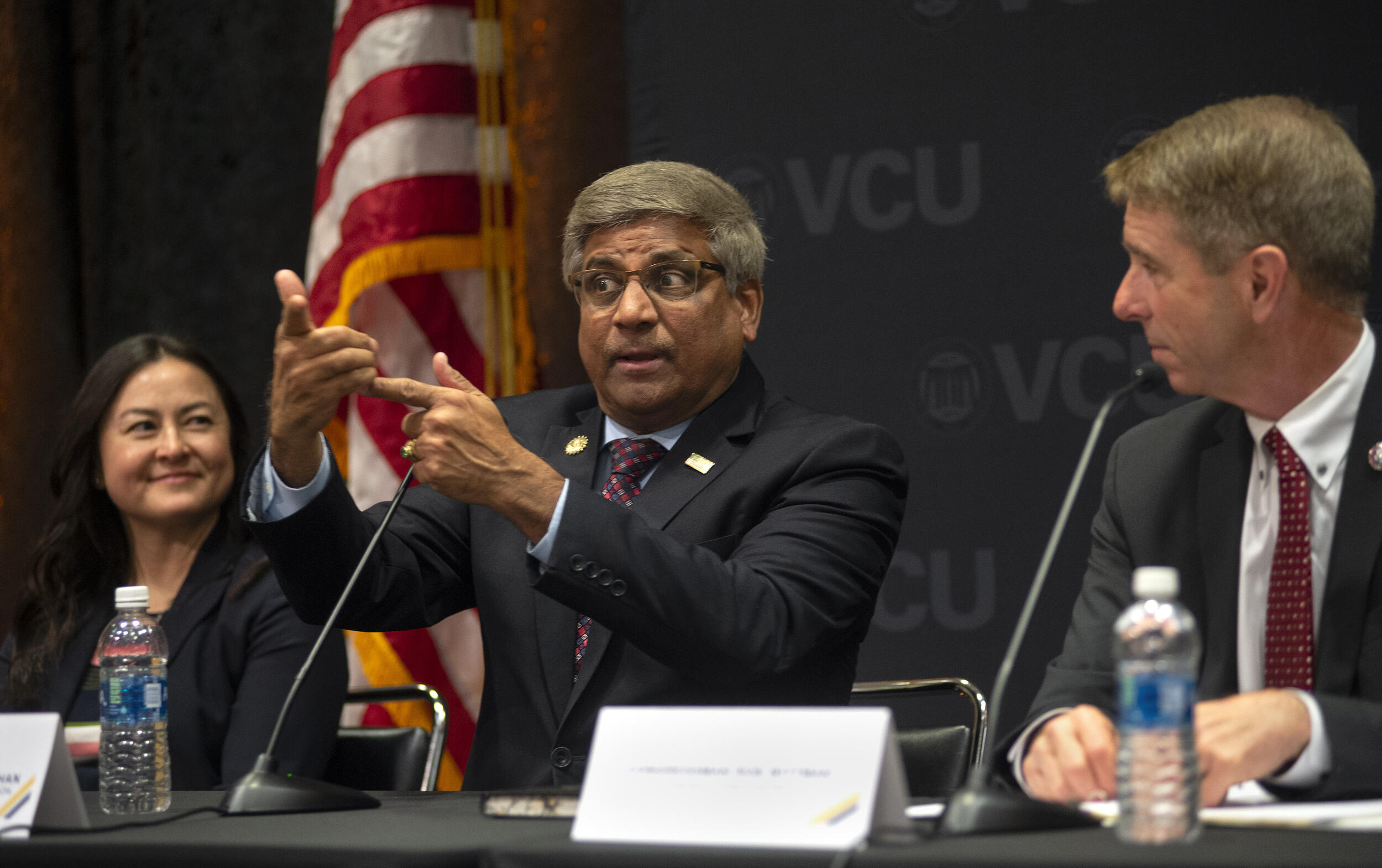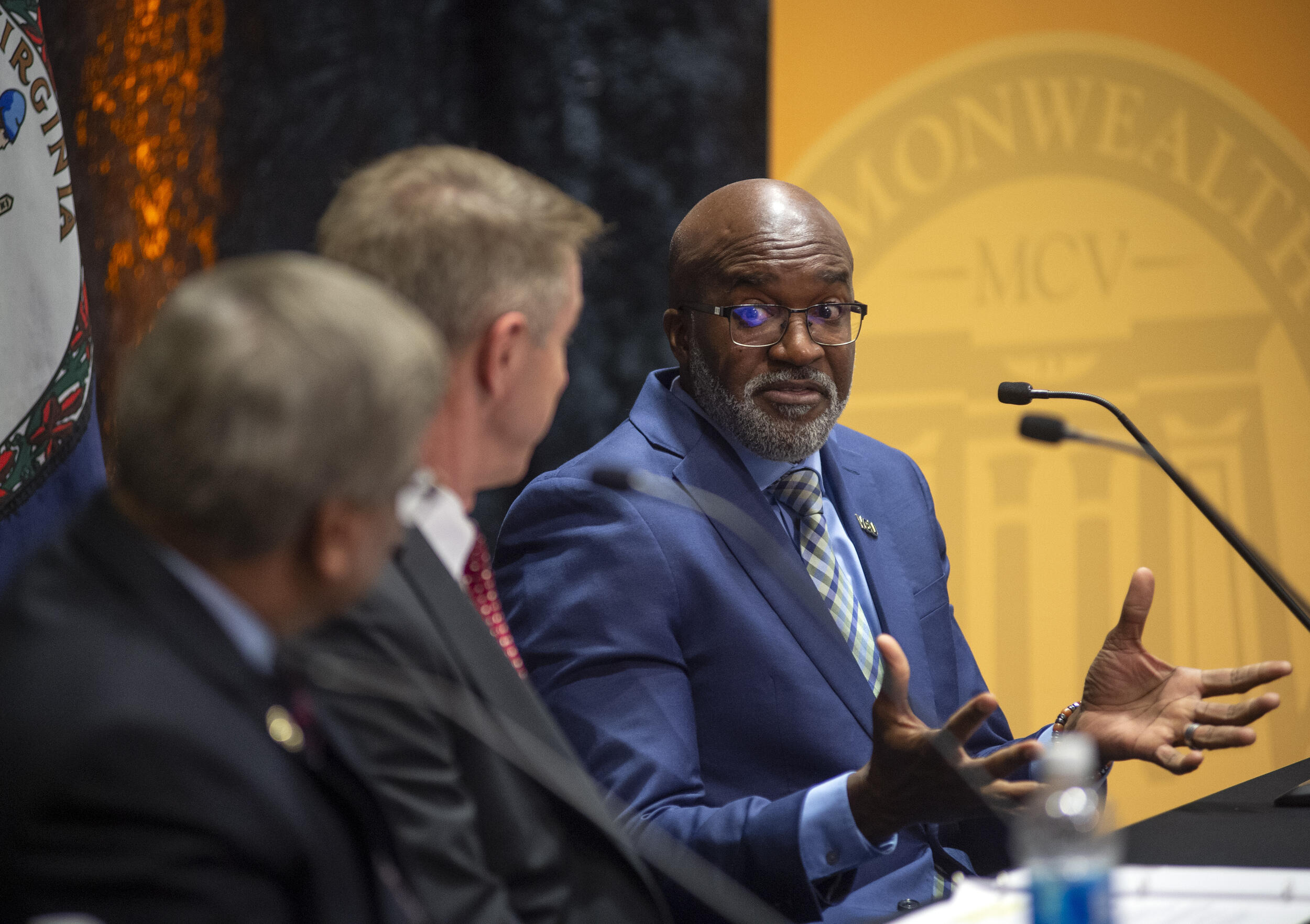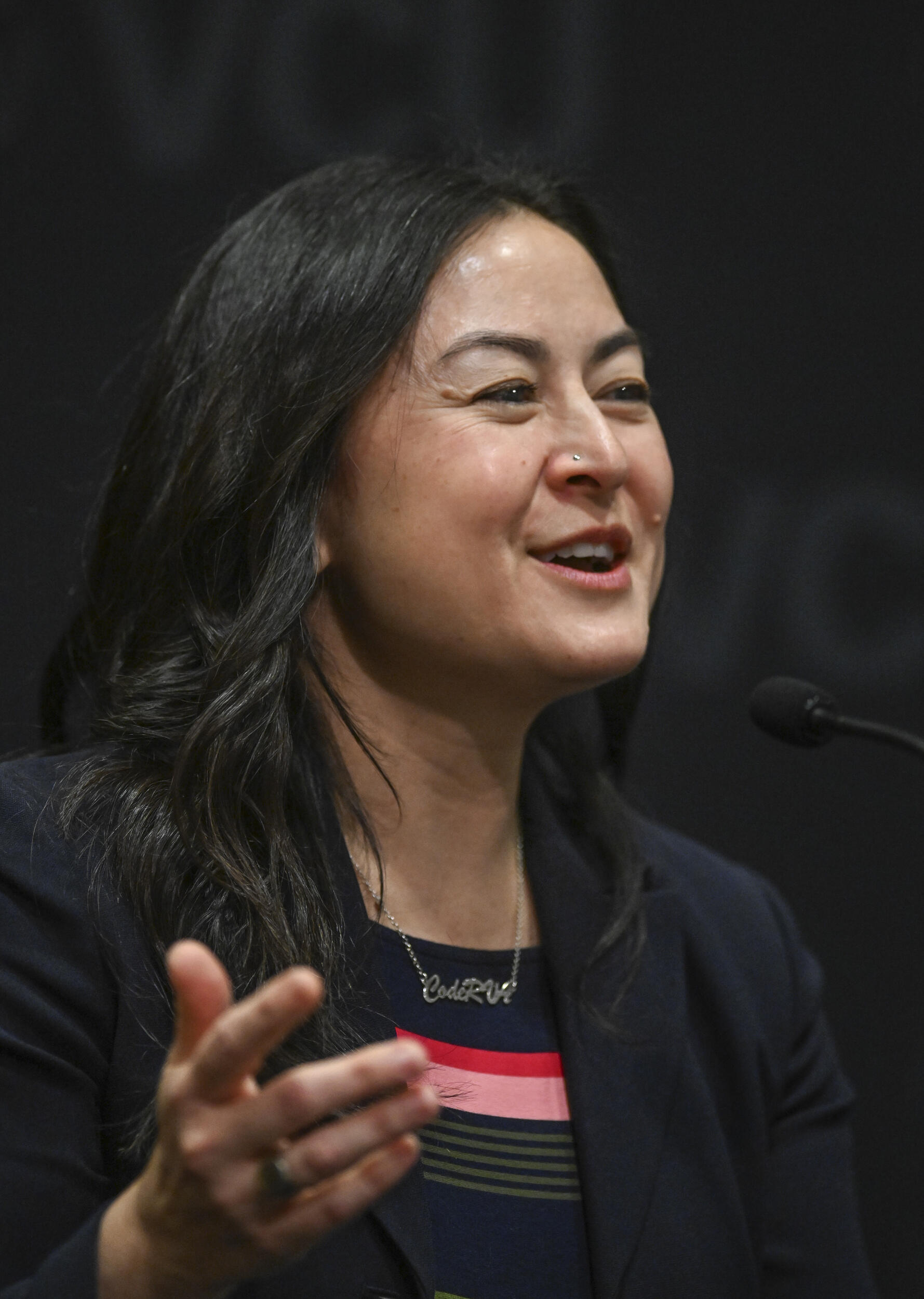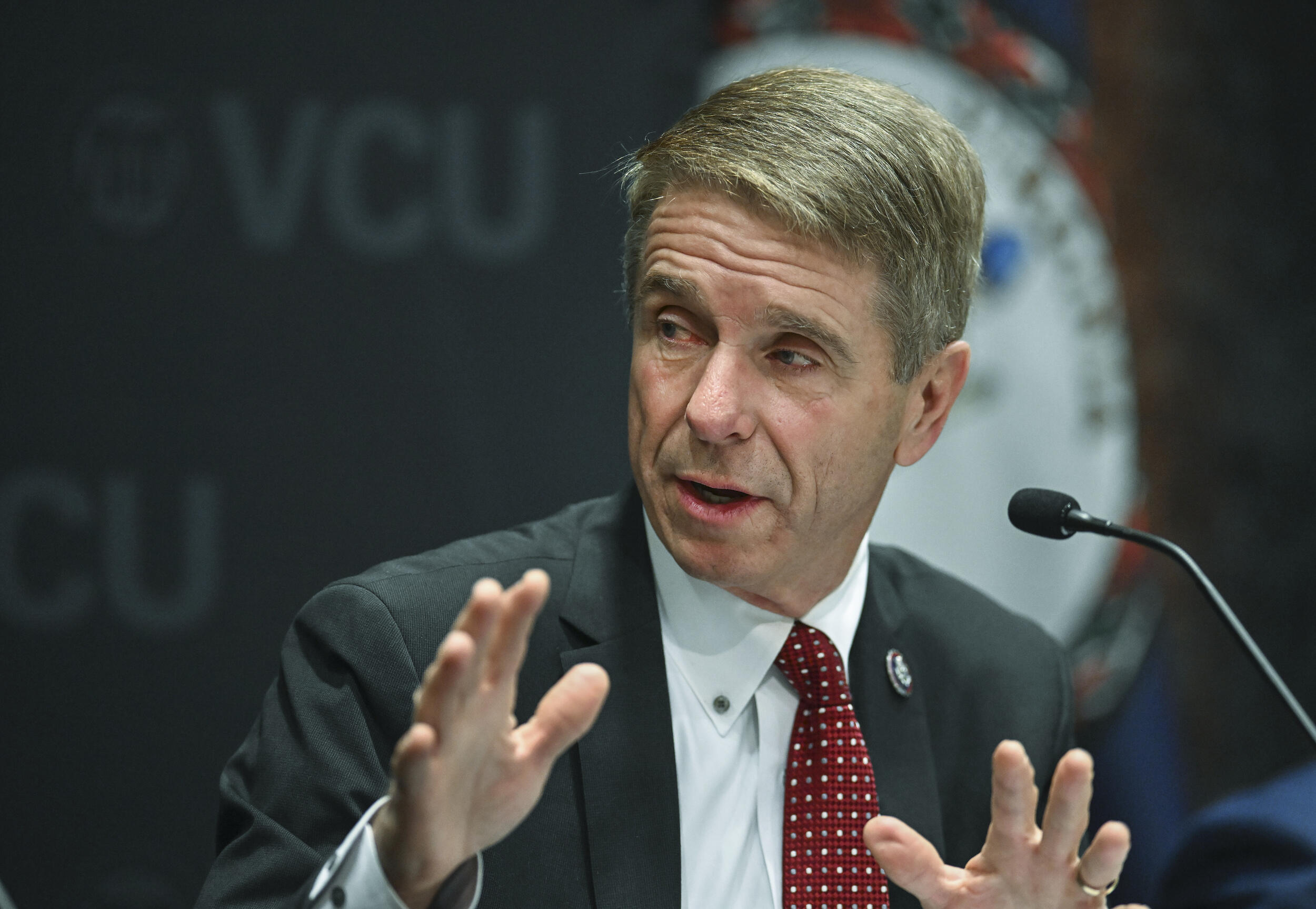
Dec. 12, 2023
Convened by Virginia congressman, roundtable with National Science Foundation director at VCU highlights how STEM education will drive tomorrow’s workforce
Share this story
Making the “spark for STEM possible for every child,” a panel at Virginia Commonwealth University on Dec. 8 highlighted how science and technology education will shape tomorrow’s workforce – and how teachers, schools and parents must work together to ensure that students are positioned to succeed.
U.S. Rep. Rob Wittman of Virginia convened the seminar, which included Sethuraman Panchanathan, Ph.D., director of the National Science Foundation, and brought together leaders to exchange ideas on how to best prepare students for careers in STEM fields to maintain the nation’s global leadership in science and discovery. The event preceded VCU’s universitywide commencement ceremony on Dec. 9, where Panchanathan served as a keynote speaker and received an honorary doctorate of humane letters.
“We have an unbelievable source of talent and ideas that make amazing things possible, not only for the United States but for the globe at large,” he said at the roundtable. “Therefore, this is a moment that we need to seize, as well as scale and speed up, to keep us continually in the vanguard of innovation as a free nation.”
Panchanathan had visited VCU in February and said he was impressed with the university’s “environment of commitment to immense talent, creativity, innovation and ideas.” VCU was recently ranked No. 47 among U.S public research universities based on the National Science Foundation’s Higher Education Research and Development fiscal 2022 survey.
Joining Panchanathan and Wittman on the panel were John Fife, Ph.D., interim director of the VCU School of Education’s Center for Innovation in Science, Technology, Engineering and Math Education, and Kume Goranson, Ed.D., executive director of CodeRVA Regional High School in Richmond. A key focus of the roundtable was the importance of developing “STEM learning ecosystems,” complex networks that connect leaders in K-12 schools, universities, industry and government to create opportunities for student innovation.
“Let’s not undersell the magnitude of this undertaking. This is an all-nation effort at every level, including students, parents, primary and secondary educators, institutions like VCU and agencies like NSF, and federal legislation,” Wittman said. “But make no mistake about our resolve and our ability to achieve and succeed. We will indeed do that.”

Preparing students for a future in STEM
Amid advances in research and innovation from recent decades, STEM has become part of the fabric of the working world, and we interact with science and technology on a daily basis. Panelists highlighted that STEM will be integral to any career students pursue, so it is critical to equip them with the necessary skills and knowledge.
“STEM is relevant for almost every aspect of life. Even if you’re not directly involved in a STEM field, you still have to be aware of STEM because it is going to impact what you do and your path forward,” Wittman said.
Advances in science and technology also mean there is a growing demand for skilled workers in these fields, and education plays a critical role in meeting this national need.
“We know that student interest in STEM significantly drops between sixth and eighth grade. However, we see that students are not losing confidence in themselves. So self-efficacy is still in place, but we have to keep the spark going for STEM fields,” Fife said. “We need to understand where students are at in middle school to make accommodations at the university level. At the same time, we need to connect with industries and agencies, who have work opportunities but want us to prepare students in a very specific way.”
“I often say that we are not lacking in talent at all,” Panchanathan added. “What we are lacking is the intensity of focus in terms of motivating, inspiring, expressing all of that talent for the benefit of our nation. We have to endeavor to make that spark for STEM possible for every child.”
Ensuring equitable access to education

The panelists emphasized the importance of providing equitable opportunities for all students and helping remove barriers to STEM education.
“One of the things students who come from historically marginalized communities might not have is the social capital with which to make connections and find opportunities for STEM. And we find that school can become that social capital for students, where we can connect them with people who are working in these fields,” Goranson said.
For example, she noted that internships are a key part of the curriculum for 11th and 12th grade at CodeRVA, where students gain exposure to the tech sector and learn foundational skills to help them succeed in a professional environment.
“We run an in-house company where students do free client work for businesses and community partners, allowing them to design projects and learn team-building skills,” Goranson said. “And we do everything during the school day, because we know that not every parent has the ability and access to design a summer internship for their students.”
Durable skills for success in the workforce
While advanced training in technical skills is critical for pursuing jobs in STEM fields, the panelists said interpersonal skills, such as communication, teamwork and critical thinking, are just as essential.
“One of the things that we’re trying to do at VCU is redefine innovation,” Fife said. “Oftentimes when students hear the word innovation, they think about an end product, and innovation is really more about a process. It’s about a way of thinking, problem-solving and teamwork. Those are the values and skills that companies really want.”
Goranson added that interpersonal-skill development is woven into the curriculum at CodeRVA.
“When I was growing up we called them soft skills, but there is nothing soft about these skills – they are durable skills,” she said. “On the very first day of ninth grade, our students are using design-thinking, project management and other skills that are needed to be successful in any job. We integrate those skills into all of our classes.”

Exploring different pathways for success
The roundtable also drew attention to the different pathways students may take in their STEM education journeys. Panelists noted that not every student is alike, and there are a variety of options to find what best suits one’s passions.
Wittman highlighted that a successful career in STEM could start with earning a certification or credential at a vocational school or technical apprenticeship.
“We need skilled technicians that have that foundational knowledge in STEM to work hands-on with complex systems,” he said. “When we talk about jobs of the future, many of those jobs won’t require a two- or four-year degree, but they will require postsecondary education and advanced skill sets.”
Panchanathan added that university students need opportunities to explore different interests and careers in their curriculums.
“It’s important for us to really start thinking about how we can make it possible for students in college to explore different pathways,” he said. “We need to give students more freedom to figure out what they really are passionate about.”
Subscribe to VCU News
Subscribe to VCU News at newsletter.vcu.edu and receive a selection of stories, videos, photos, news clips and event listings in your inbox.










